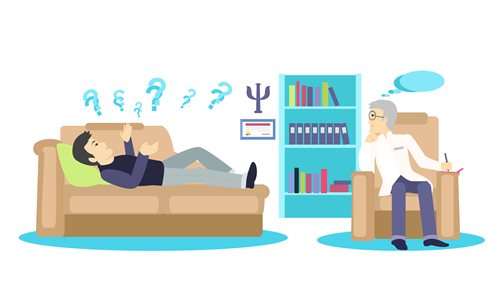June 12, 2017
By Ken Duckworth, M.D.

Getting the right diagnosis often isn’t easy for psychiatric conditions. In our field, we don’t yet have biologic tests that can easily define one condition from another. If your blood pressure is 140 over 90, you have hypertension or high blood pressure. In mental health, we have to rely on a description of patterns or symptoms to makes diagnoses. This model is fraught with challenges.
Without a clear biological model to work from, and given the complexity of the human brain, the field has settled upon dividing these descriptions of symptoms into syndromes. The Diagnostic and Statistical Manual of Mental Disorders (DSM) holds these symptom descriptions in order to help professionals make reliable and consistent diagnoses. This means a social worker in Detroit should make the same diagnosis as a psychiatrist in Boston and a psychologist in Santa Fe.
However, the diagnostic process is more complex than just reading symptoms in a DSM. Here are a few thoughts on what I have observed in making diagnoses:
Let’s focus on the sometimes-confused conditions of Bipolar Disorder and Borderline Personality Disorder (BPD). In a snapshot, they can look similar—both can present with impulsive behavior, intense emotions and suicidal thinking. But this snapshot is not the best way to tell them apart. It’s really the movie of the symptom presentation over time that can help make the diagnosis distinct.
Classic Bipolar Disorder Type 1 is easier to differentiate from BPD than Bipolar 2. True manic symptoms (often with hallucinations) are the hallmark of Type 1 and these symptoms are not seen in the same way in BPD. Bipolar Type 2 is a more challenging diagnosis to differentiate from BPD, because the classic manic episode is absent. So, on the surface, it can appear more like BPD. Here are a few ways to help tell the difference between bipolar and BPD:
People with Bipolar Type 1 have cycles that switch from a depressive state to a manic state. Manic symptoms sometimes include flashes of deep depression within the manic episode (called rapid cycling). Between cycles, people often have periods of true symptom-free wellness. This period of wellness can last weeks, months or years depending on the person. People diagnosed with BPD typically have more persistent day-to-day emotional symptoms which can impact everyday life. BPD mood changes are more persistent, short-lived and reactive to environmental factors, like stress at work or home.
Sleep changes are often an early indicator of a bipolar disorder. During a bipolar episode, a person might be awake for days and not experience fatigue or they may sleep for days. Meanwhile, sleep patterns are less commonly impacted in BPD.
Mood disorders, like bipolar disorder and depression, run in families, but aren’t directly passed on through a single, specific gene. A family history of mood disorders increases the chances of mood disorders appearing in relatives.
Intense relationships often fraught with conflict are the hallmark of borderline personality disorder. People with BPD often have intense relationship histories, and many of their experiences with emotional dysregulation (intense reactions and variabilities) are in response to relationship interactions.
Self-harm such as cutting one’s skin is more common in BPD and is thought to be a way to help with emotional regulation. “I’m not suicidal, I was just trying to change my feelings by cutting,” I’ve been told by individuals with BPD. In fact, 75% of individuals with BPD have cut, burned, hit or injured themselves.
Diagnosing a mental illness isn’t like diagnosing some physical illnesses—it takes a lot of observation and understanding to find the right diagnosis. If your diagnosis doesn’t feel right or isn’t clear, it’s best to talk to your clinician. Ask about your diagnosis and treatment plan and be engaged in the diagnostic process. If you and your practitioner aren’t sure, ask for a second opinion. It’s okay not to be sure, and it’s smart to keep learning.
Both BPD and bipolar have good treatment options, but they are very different options, so putting time into getting a correct diagnosis is essential. These are serious health conditions that need individualized support and care in order to optimize recovery.
Ken Duckworth is medical director at NAMI.
We’re always accepting submissions to the NAMI Blog! We feature the latest research, stories of recovery, ways to end stigma and strategies for living well with mental illness. Most importantly: We feature your voices.
LEARN MORENAMI HelpLine is available M-F, 10 a.m. – 10 p.m. ET. Call 800-950-6264,
text “NAMI” to 62640, or email. In a crisis, call or text 988 (24/7).